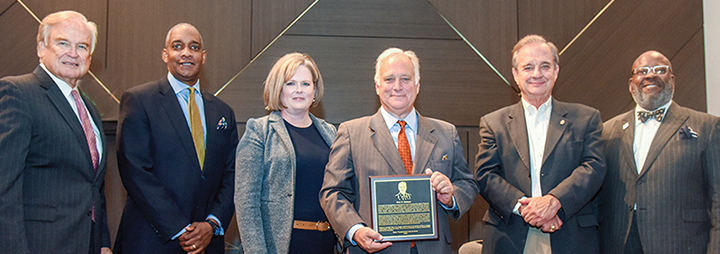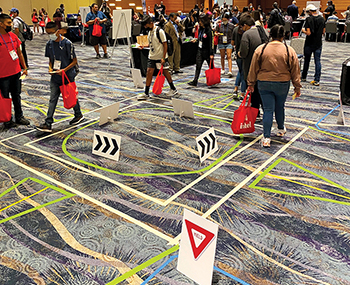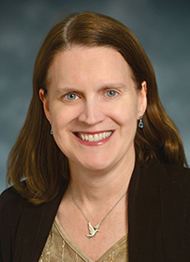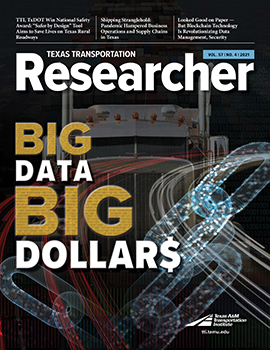Kirk Watson Inducted into Texas Transportation Hall of Honor
Kirk P. Watson, a champion of transportation investment for Austin and the state of Texas for more than two decades, was inducted into the Texas Transportation Hall of Honor Nov. 4.

Texas A&M University System Chancellor John Sharp welcomed some 100 guests including numerous VIPs from the public and private sectors to the event. Throughout his decades-long career in public service as Texas senator, mayor of Austin, and chair of the Capital Area Metropolitan Planning Organization Policy Board, Watson championed numerous projects to improve transportation mobility, funding, air quality and safety to improve the state’s economy and Texans’ quality of life.
As mayor of Austin, Watson passed multiple transportation bonds, served as an advocate for public transportation, developed a new international airport, and encouraged environmental stewardship and transportation planning. His relationship-building skills as mayor were lauded, especially in convening representatives of Austin’s minority communities to hear their perspectives on how best to build an equitable multimodal transportation system during an important city bond election to expand bus and rail lines. And Watson’s work with the Central Texas Regional Mobility Authority was credited with creating more than 480 additional lane miles of roadway and 70 miles of bike lanes and pedestrian paths.
“Even with these numerous and significant accomplishments, Kirk’s real strength lies in his dogged determination and special ability to engage stakeholders, define the issues, and arrive at consensus to deliver transportation solutions for the public,” said TTI Agency Director Greg Winfree.
Watson was deeply honored and very thankful for the recognition, pointing out his many years of working with TTI and emphasizing the Institute’s value. “As we face the transportation challenges of the future, we need organizations like TTI to guide us and assure we are innovating,” he said.
Watson is the 47th member of the Hall of Honor, established in 2000 by TTI to recognize select individuals who played pivotal roles in the advancement of transportation in Texas and the nation. The Hall of Honor is located at TTI’s Headquarters in Bryan, Texas.
TTI, Texas A&M Offer Online Master of Engineering Program for Transportation Professionals
Beginning fall 2022, Texas A&M University’s College of Engineering, in partnership with TTI, now offer an online Master of Engineering in engineering for transportation professionals. Designed specifically for transportation professionals currently in management or who desire to achieve a management position, the degree provides students with the background and skills to become better managers or launch their management careers.
Degree candidates are taught by faculty from Texas A&M’s Department of Multidisciplinary Engineering specifically selected from TTI’s subject matter experts in the curriculum topics. Courses in nontechnical topics relevant to managers and/or policy or decision makers in the transportation community form the core of the curriculum. The program also satisfies professional development requirements for registered professional engineers. The program’s first-year courses include topics on leadership, organizational management, the economy and communication. Second-year core courses examine topics on selection and adoption of technology, sustainable transportation, policy, regulatory and legal issues, and innovative approaches to transportation finance. Two capstone courses in year two cover selecting and completing a transportation-related project.
“We’re offering a unique opportunity to current and future industry leaders to help them round out the technical side of their education so they can better grapple with today’s complex transportation world,” explains Kevin Womack, TTI senior research scientist and program manager. “I can’t think of anything else that opens more doors in the industry than a first-rate A&M engineering degree.”
TTI’s Beverly Kuhn Co-leads STEM Workshop at 2021 AISES National Conference

With support from the Institute of Transportation Engineers (ITE) Arizona Section and Mountain District, TTI Senior Research Engineer Beverly Kuhn co-led an activity during the Boeing Company’s Sept. 22 STEM Day event as part of the 2021 American Indian Science and Engineering Society (AISES) National Conference at the Phoenix Convention Center.
The workshop topic was Circle Versus Square: Which Is Better? Roundabouts Versus All-Way Stop-Controlled Intersections. Kuhn’s co-leader for the workshop was Kohinoor Kar, an Arizona State University faculty member and a transportation engineer manager at the Arizona Department of Transportation. Dozens of high school students from different parts of the country attended this workshop, many from Native American nations. The objective was to educate them on the difference between two types of intersections that road users often come across.
A dummy intersection was mocked up with edge lines, centerlines and crosswalks; stop, yield and directional arrow signs were placed as appropriate. Students were asked to evaluate the intersection in two different settings for safety and other factors after navigating them.
Acknowledgment: A version of this story originally appeared in the fall 2021 issue of The Summit: ITE Mountain District Quarterly Magazine. Used by permission of the author.
Fitzpatrick Co-authors NCHRP User Guide on Setting Posted Speed Limits

TTI Senior Research Engineer Kay Fitzpatrick led the team of experts who wrote the recently published NCHRP Research Report 966: Posted Speed Limit Setting Procedure and Tool: User Guide for the National Cooperative Highway Research Program (NCHRP). Several engineering factors are considered when determining a posted speed limit, including the 85th percentile speed, which is based on the driving behavior of most drivers. This percentile speed is believed to represent a speed that would minimize crashes. The report provides the Speed Limit Setting Procedure (SLS-Procedure), which considers factors beyond the 85th percentile speed, including driver speed choice and safety associated with the roadway, to help engineers make informed decisions about the setting of speed limits. The report also provides instructions for using an automated version of the SLS-Procedure via the spreadsheet-based Speed Limit Setting Tool (SLS-Tool), where users input data for a roadway segment and obtain the suggested speed limit.
“The SLS-Procedure and accompanying SLS-Tool reflect current knowledge of relationships among roadway conditions, traffic, safety and operating speeds,” says Fitzpatrick. “The tool provides an easy-to-use, intuitive spreadsheet that produces a suggested speed limit reflecting existing conditions. The tool can also document the conditions for a speed-zone study.”
The user guide is accompanied by NCHRP Web-Only Document 291: Development of a Posted Speed Limit Setting Procedure and Tool, which documents the research efforts of NCHRP Project 17-76.
